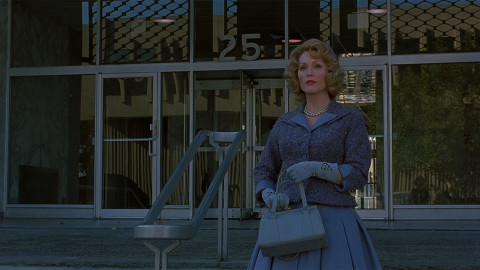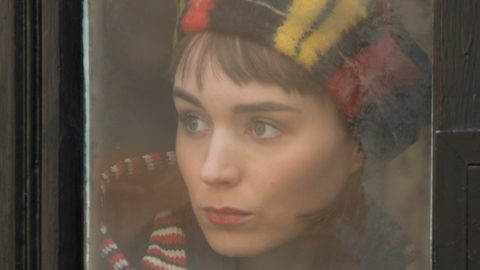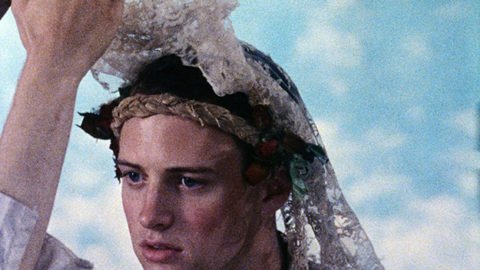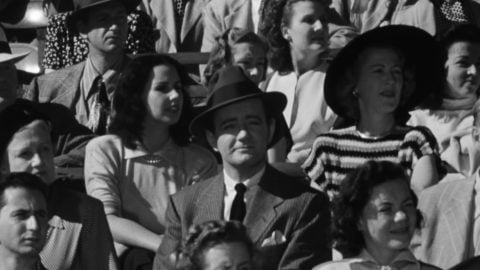Review: Carol
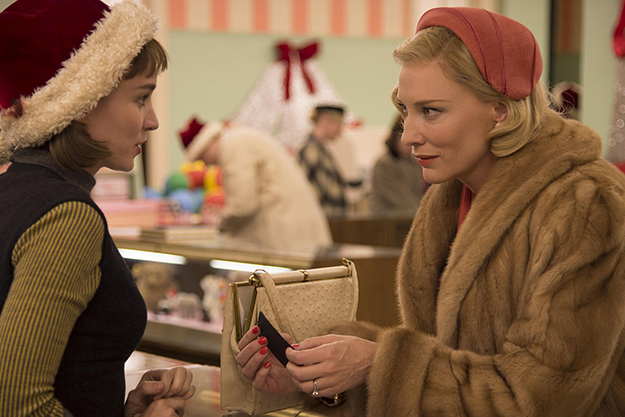
A pair of gray suede gloves abandoned on a department store counter; a small 35mm still camera obscuring a woman’s face except for her eyes; an electric train set; a finger on the disconnect button of a telephone; an ungloved, well-manicured hand resting briefly on another woman’s shoulder: Todd Haynes’s Carol is not a Hitchcockian thriller, although it is adapted from the second novel by Patricia Highsmith, whose first, Strangers on a Train, was the basis for one of the master of suspense’s great movies. But as Godard said of Hitchcock—that what we remember of his films are not their plots but “a glass of milk, a handbag, a string of pearls”—we might apply to Carol, a film in which objects and small gestures become touchstones, for characters and viewers alike, of a passion beyond words.
Perhaps it’s misleading to raise the specter of Hitchcock, since Carol is the first of Haynes’s six features (seven with the miniseries Mildred Pierce) that feels as if it is made entirely in his own voice. Yes, we might recognize that the hand touching the shoulder echoes David Lean’s Brief Encounter and that the transcendent final scene is inspired by the blocking and camera moves (although not the averted eyes) of the Ernie’s Restaurant sequence in Vertigo. But Haynes has reimagined these and other moments in putatively heterosexual film romances as expressions of the thrilling slow-burn, obstacle-strewn passion of two women fully emerging from the closet. And it is Haynes—without the extravagant shape-shifting masquerades of Velvet Goldmine and Poison—coming out as well.
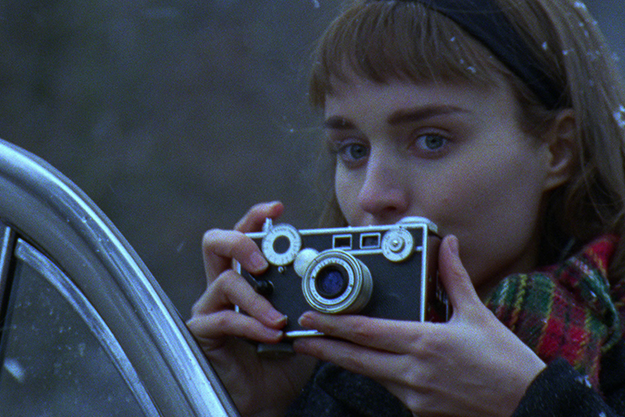
The narrative, precisely chiseled by Phyllis Nagy from the ungainly novel, is deceptively simple. The setting is New York in the early Fifties. Therese (Rooney Mara) is a 20-year-old recently arrived in the big city. Carol (Cate Blanchett) is a wealthy suburban married woman and mother of a preteen. They meet in the toy section of a department store where Therese is working as a Christmas temp salesgirl and Carol is shopping for a doll. Carol, seductive, sophisticated, and in a mess of trouble at home because of her history of affairs with women, and Therese, beautiful and as unreadable to herself as to others (“Like something flung out of space” Carol will say of her), are attracted at first sight. Carol leaves her gloves on the counter, probably as bait, but maybe not. The surprise is that Therese, whose desires are unformed and inchoate, seizes the opportunity to call her. They meet and soon are madly in love. The affair is fraught with danger even before it is consummated. Carol could lose custody of her daughter; Therese could lose Carol, if her rejected, resentful husband (Kyle Chandler) forces her to choose between Therese and her child.
What’s remarkable about Carol is that it seems to exist entirely in the present moment—to be precise, in that electric, elastic, heart-stopping/heart-racing present of romantic desire. It is a film composed of gestures and glances, its delicacy a veiled promise of abandon. And it could not exist without the extraordinary performances of Blanchett and Mara, who summon the entire lifetimes of their characters in their eyes and in the timbre of their voices. The chemistry between Carol and Therese is palpable and universal, but their desire, which takes rare courage to pursue, is shaped by the sexual repression of America in the years immediately following World War II. That world is beautifully realized in Ed Lachman’s cinematography, where the drab, oppressively shadowed, often rain-swept city is transformed by the faces of two lovers, illuminated from within and without. “You’d be so easy to love,” sings Ella Fitzgerald in one of the period tunes that augment Carter Burwell’s aching score. Is it an irony or is it the body-and-soul truth? It’s both, and how!



